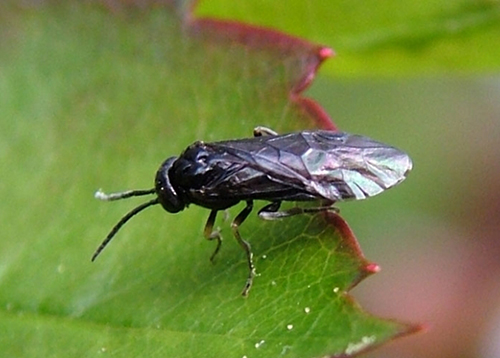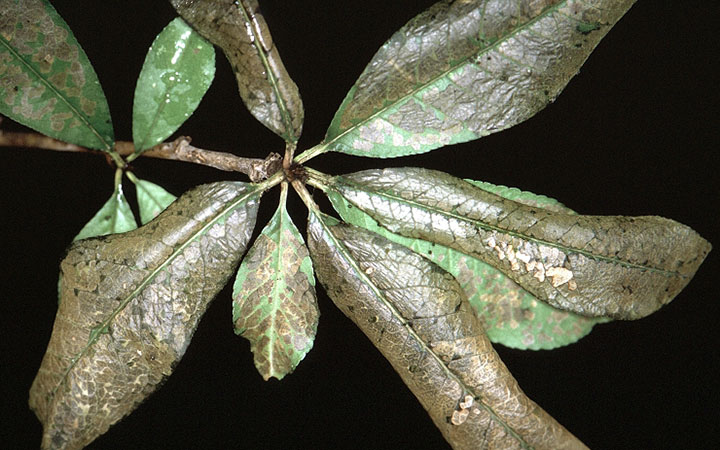Integrated Pest Management
Pear Sawfly
 Adult pear sawfly (Cheryl Moorehead, Bugwood.org)
Adult pear sawfly (Cheryl Moorehead, Bugwood.org)
 Pear sawfly larvae (Cheryl Moorehead, Bugwood.org)
Pear sawfly larvae (Cheryl Moorehead, Bugwood.org)
 Pear sawfly damage (Jerry A. Payne, USDA ARS, Bugwood.org)
Pear sawfly damage (Jerry A. Payne, USDA ARS, Bugwood.org)
HOSTS
- Cherry
- Pear
- Plum
- Juneberry
- Mountain Ash
- Cotoneaster
DESCRIPTION
The pear sawfly, which is actually a wasp, is a common pest on pear, cherry, and hawthorn in Utah. The slug-like appearance of the larval stage has prompted this insect to also be referred to as the pear or cherry slug in various parts of the country.
BIOLOGY
The first generation appears in May when the adults emerge from cocoons that have overwintered in the soil. After emergence, adults mate and insert their eggs under the epidermis of a leaf where the eggs hatch 1-2 weeks later. The newly hatched larvae move to the top of leaves to feed on leaf epidermis between veins. Last instar larvae pupate and adults emerge August through September. The second generation is generally the more damaging stage because of the higher populations that commonly occur later in the season.
SYMPTOMS
- Skeletonized leaves
- Defoliation in severe cases
GENERAL MANAGEMENT
the pear sawfly is rarely a problem if any pesticides are used for control of other insects. In certain circumstances, however, the pear sawfly can reach damaging population levels. Because the larvae are extremely susceptible to desiccation, several references indicate that road dust, wood ashes or dirt thrown on the tree is enough to control this insect.
INSECTICIDES
Proper spray timing occurs when larvae are visible during either generation. Rotate products from differnet groups every year to minimize insect resistance to insecticides. Make sure the product you select is recommended for your intended application site, e.g., ornamental or fruit trees.

